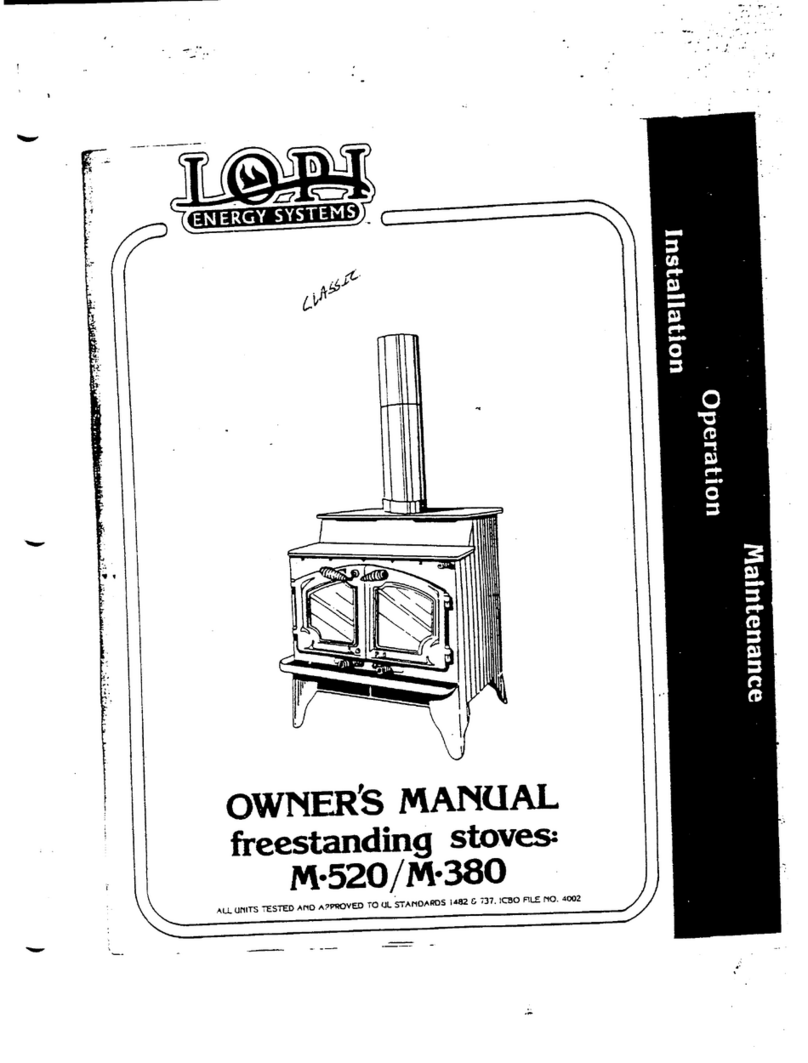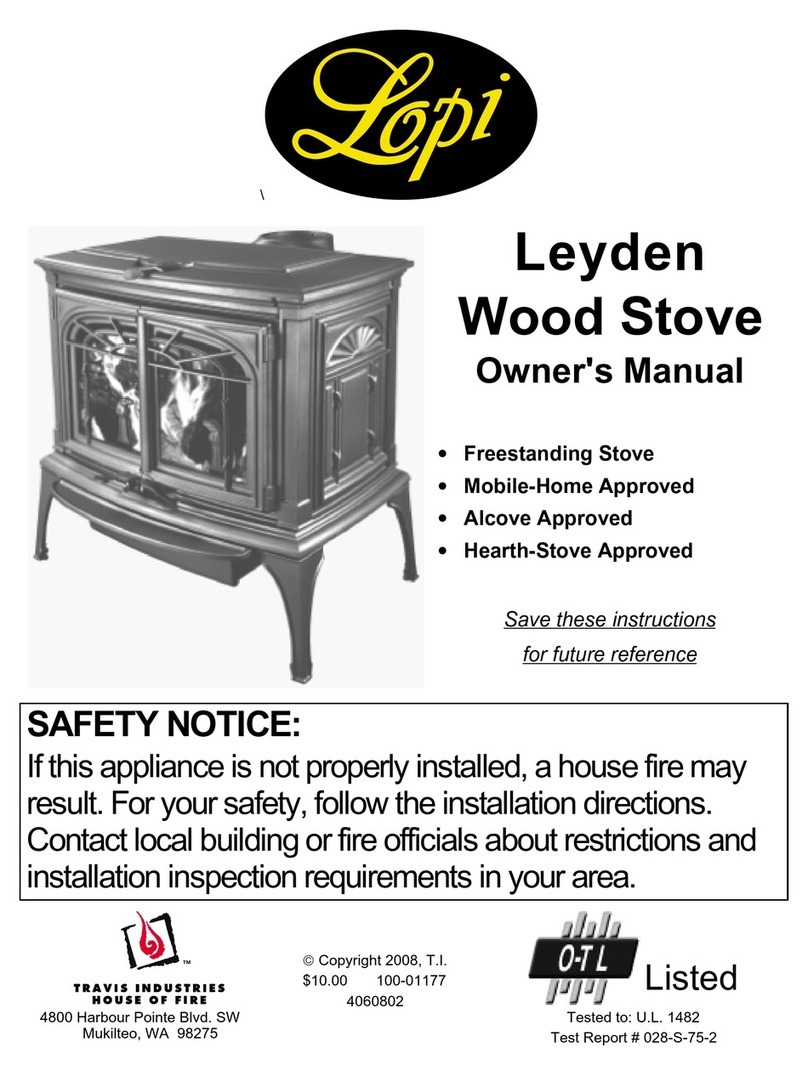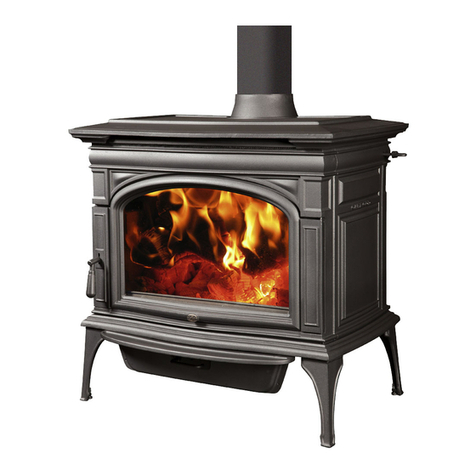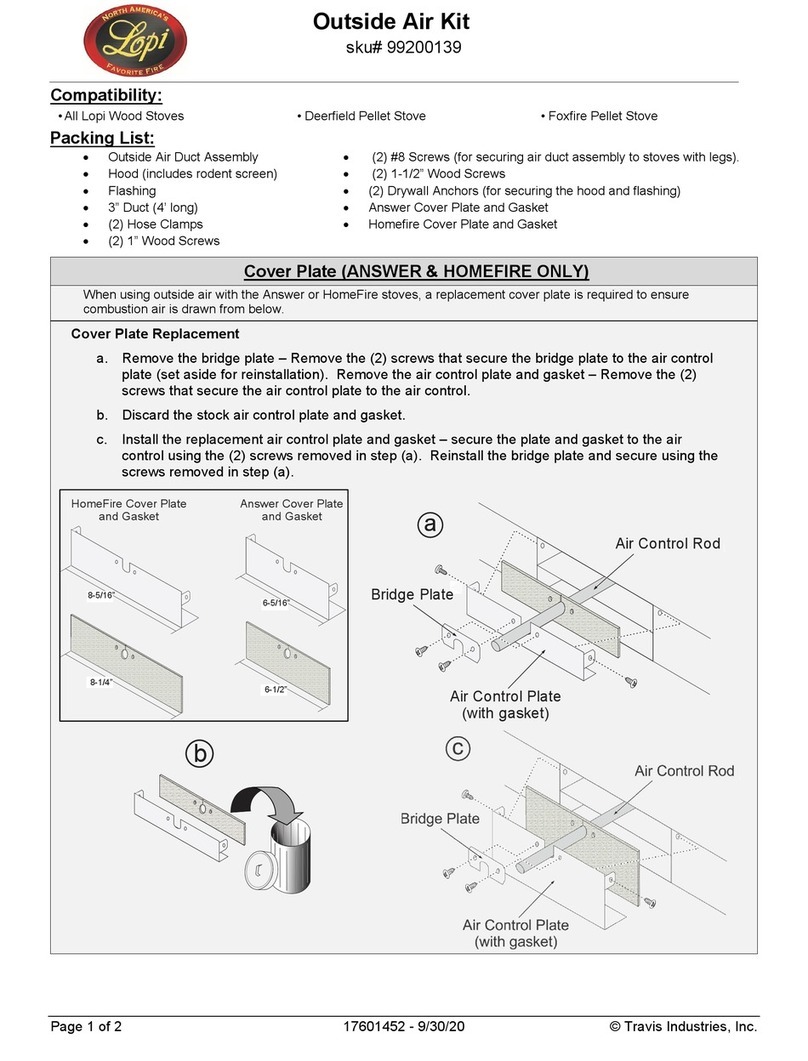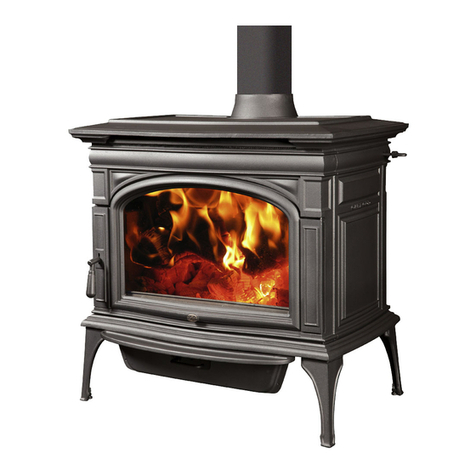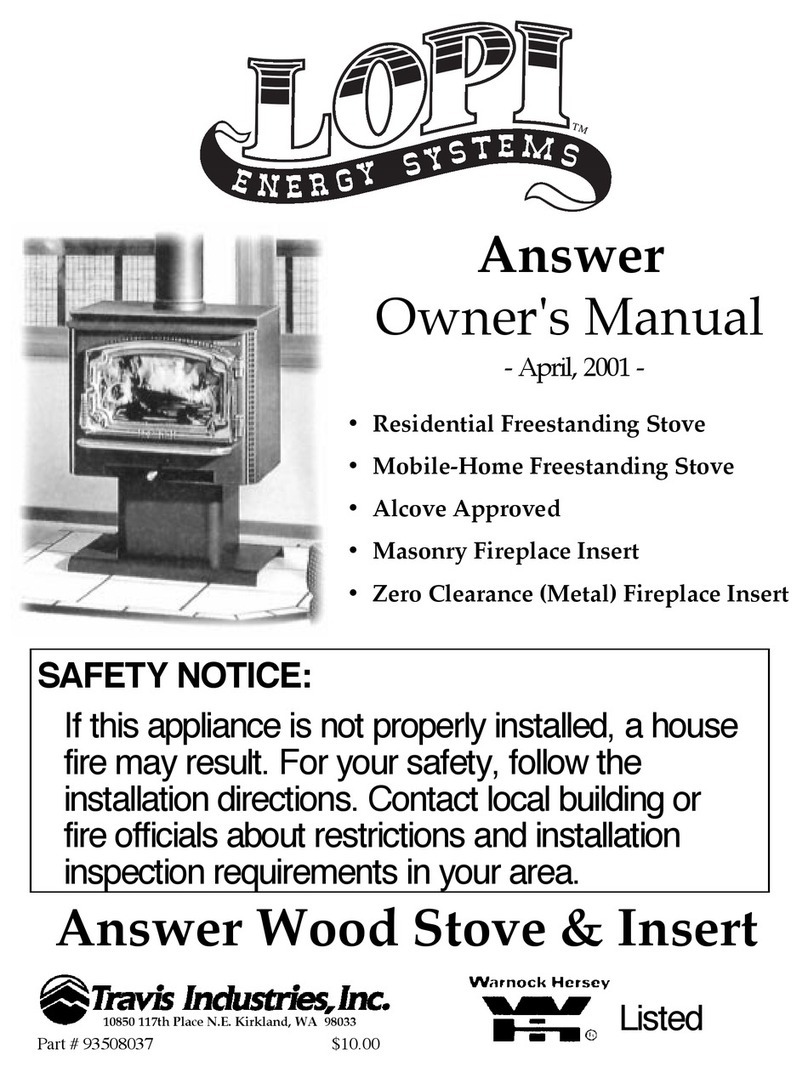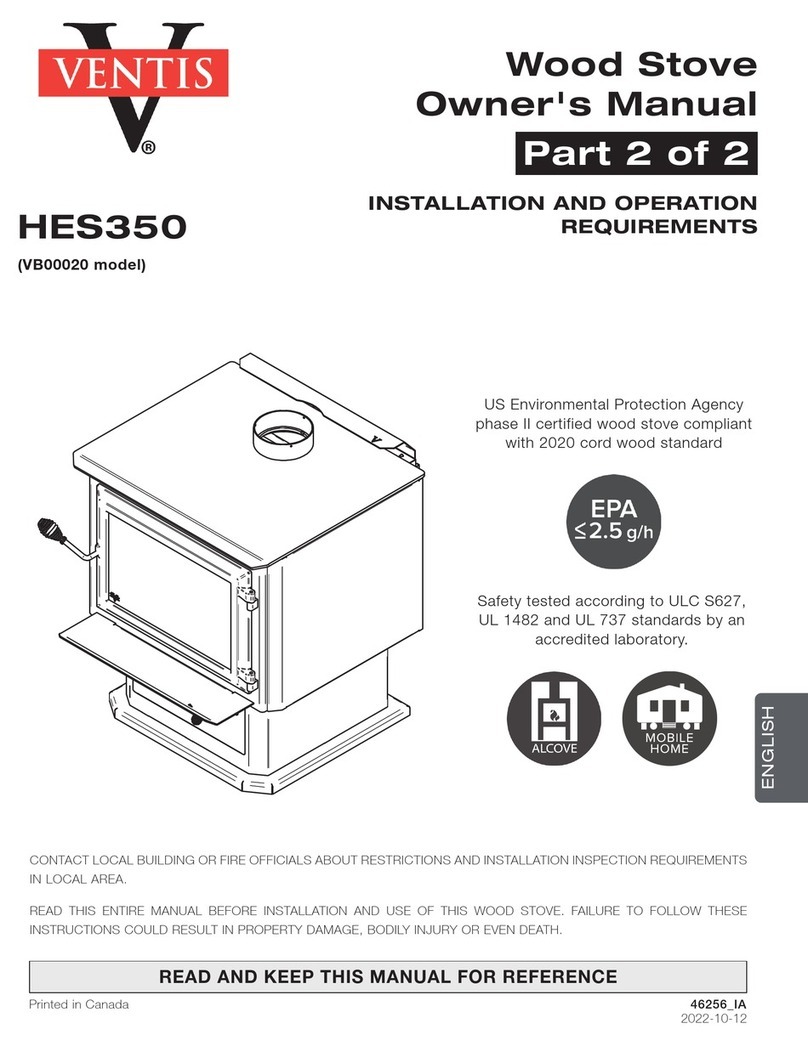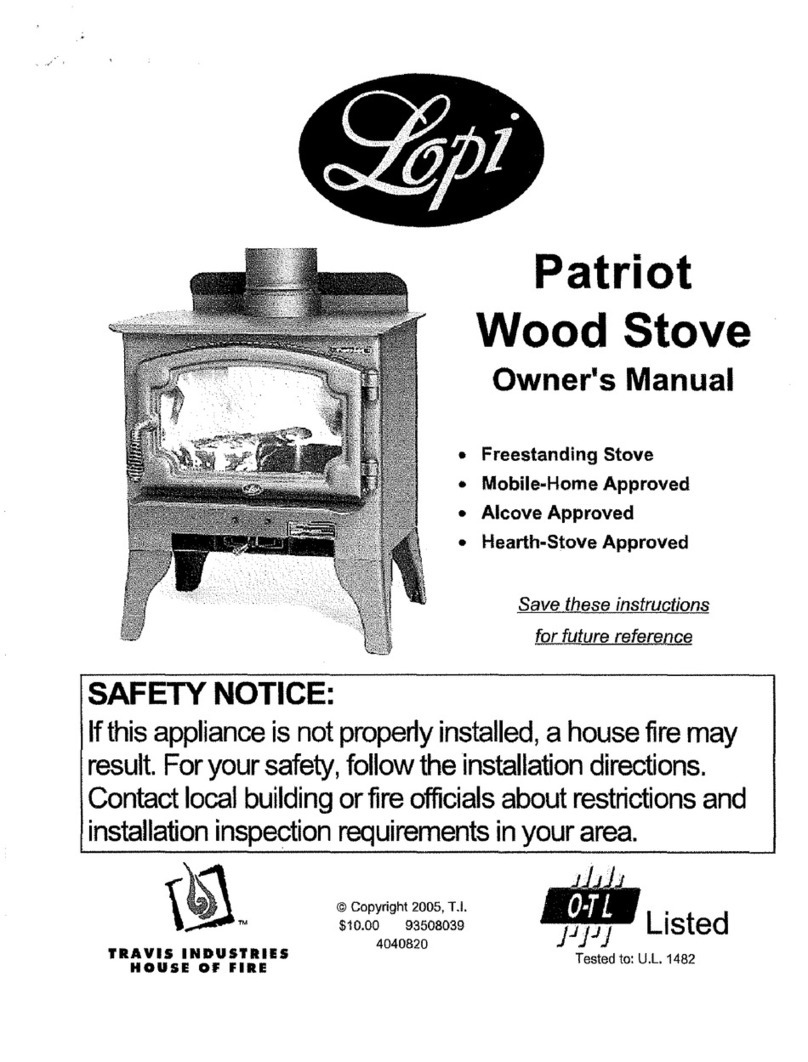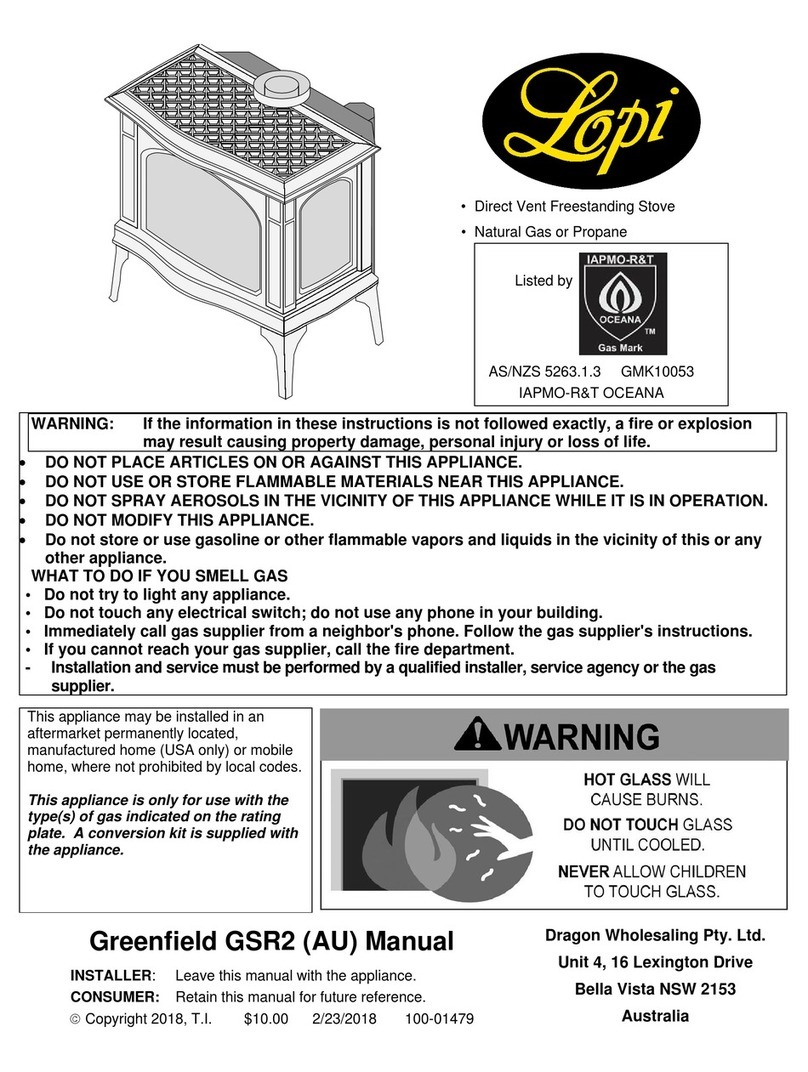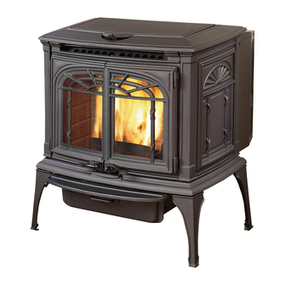
Table of Contents 3
© Travis Industries 100-01277 4111111
Introduction ......................................................2
Important Information......................................2
Installation Options..........................................6
Features ............................................................6
Heating Specifications.....................................6
Dimensions.......................................................6
Emissions .........................................................6
Planning the Installation..................................7
Preparation for Installation....................................7
Floor Protection Requirements ......................8
Stove Placement Requirements .....................8
Clearances........................................................8
Chimney Connector Requirements................9
Chimney Requirements.................................10
Chimney Termination Requirements ...........11
Outside Air Requirements.............................11
Standard Ceiling with a Factory Built Chimney...12
Cathedral Ceiling with a Factory Built Chimney..12
Exterior Factory Built Chimney............................13
Hearth Stove Positive Connection ......................13
Interior or Exterior Masonry Chimney .................14
Safety Notice ..................................................15
Before Your First Fire....................................15
Verifying the Installation......................................15
Curing the Paint..................................................15
Over-Firing the Stove..........................................15
Opening the Door...........................................15
Starting a Fire.................................................16
Adjusting the Burn Rate................................17
Approximate Air Control Settings........................17
Ash Removal ..................................................17
Optional Blower Operation............................18
Re-Loading the Stove....................................18
Overnight Burn...............................................18
Normal Operating Sounds ............................18
Hints for Burning ...........................................19
Selecting Wood..............................................19
Why Dry Wood is Key.........................................19
Wood Cutting and Storage..................................19
Troubleshooting.............................................20
Daily Maintenance (while stove is in use)...21
Remove Ash (if necessary).................................21
Clean the Glass (if necessary)............................21
Monthly Maintenance (while appliance is in
use)..................................................................22
Door and Glass Inspection..................................22
Creosote - Formation and Need for Removal .....22
Yearly Maintenance ....................................... 23
Touch-Up Paint...................................................23
Cleaning the Air Duct and Blower (if applicable).23
Firebrick and Baffle Inspection............................23
Door Parts.......................................................24
Lopi Republic Door .............................................24
Replacing the Glass............................................24
Replacing the Door Gasket.................................24
Replacing the Door Handle.................................24
Firebox Parts..................................................25
Floor and Side Firebrick Removal & Replacement25
Air Tube Removal & Replacement...............26
Baffle Removal & Replacement....................26
Warranty .........................................................27
Listing Label........................................................29
Stove Leg Installation....................................30
Pedestal Installation (Avalon 99200127, Lopi
99200122)........................................................30
Outside Air Connector (Part number
99200139)........................................................30
Rear Blower Installation (Part # 99000138) .31

